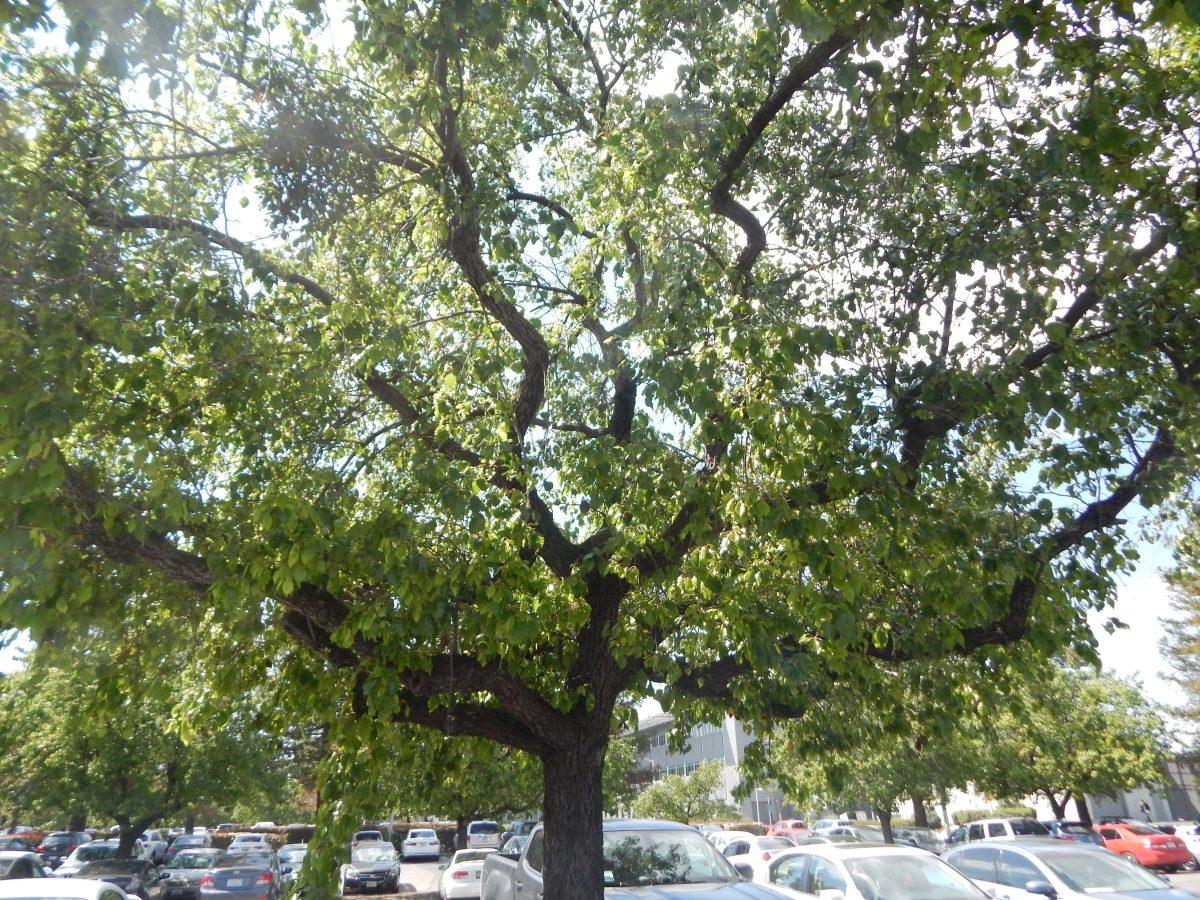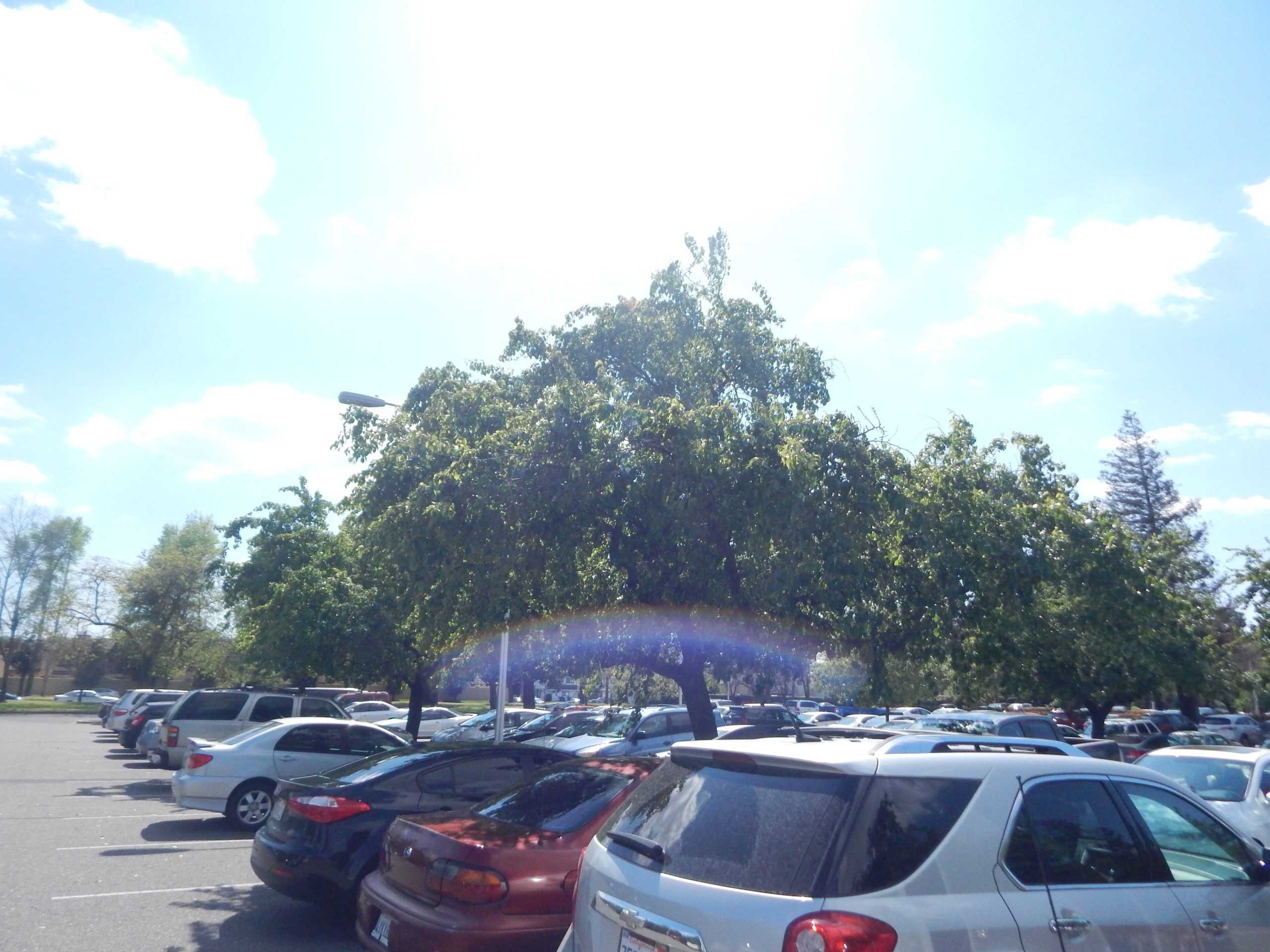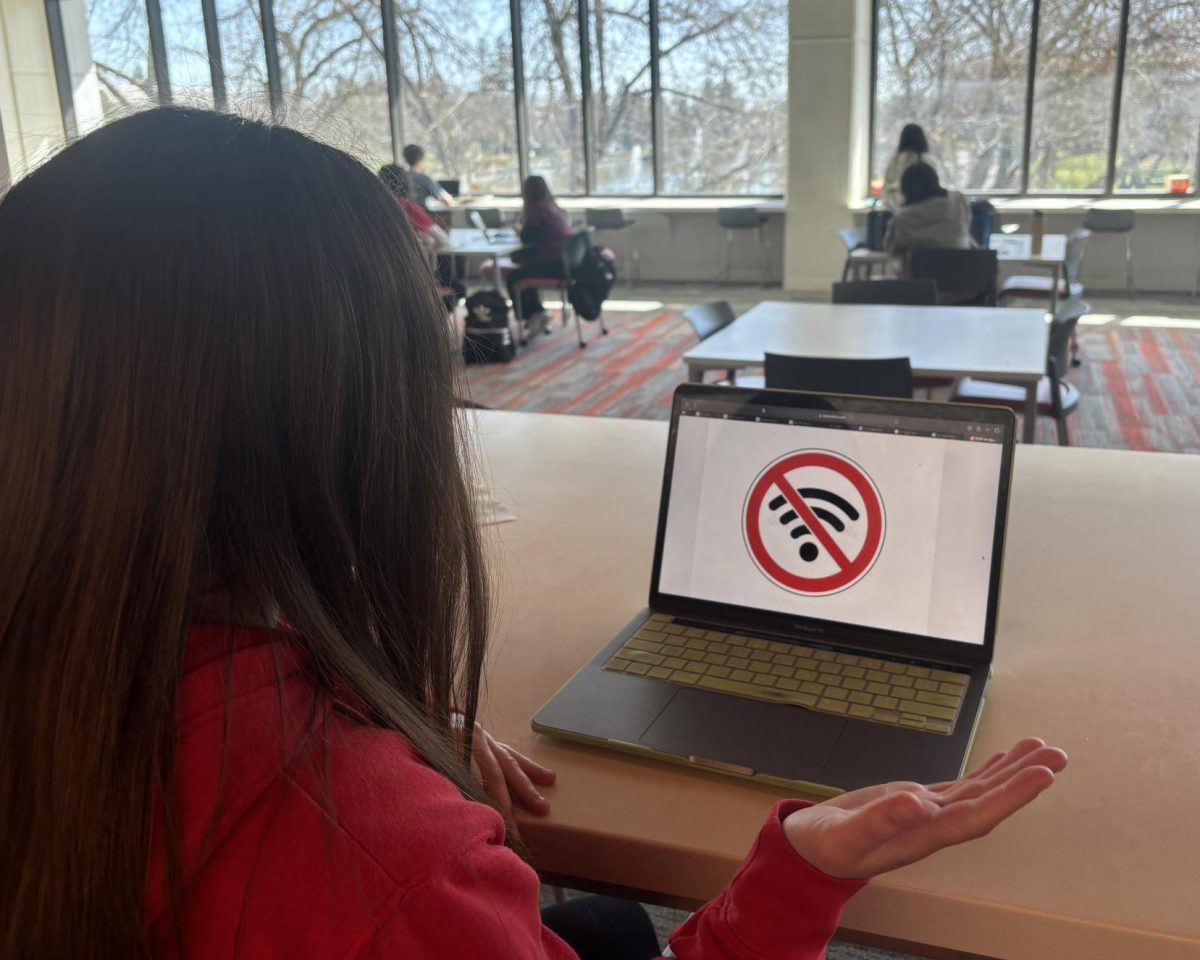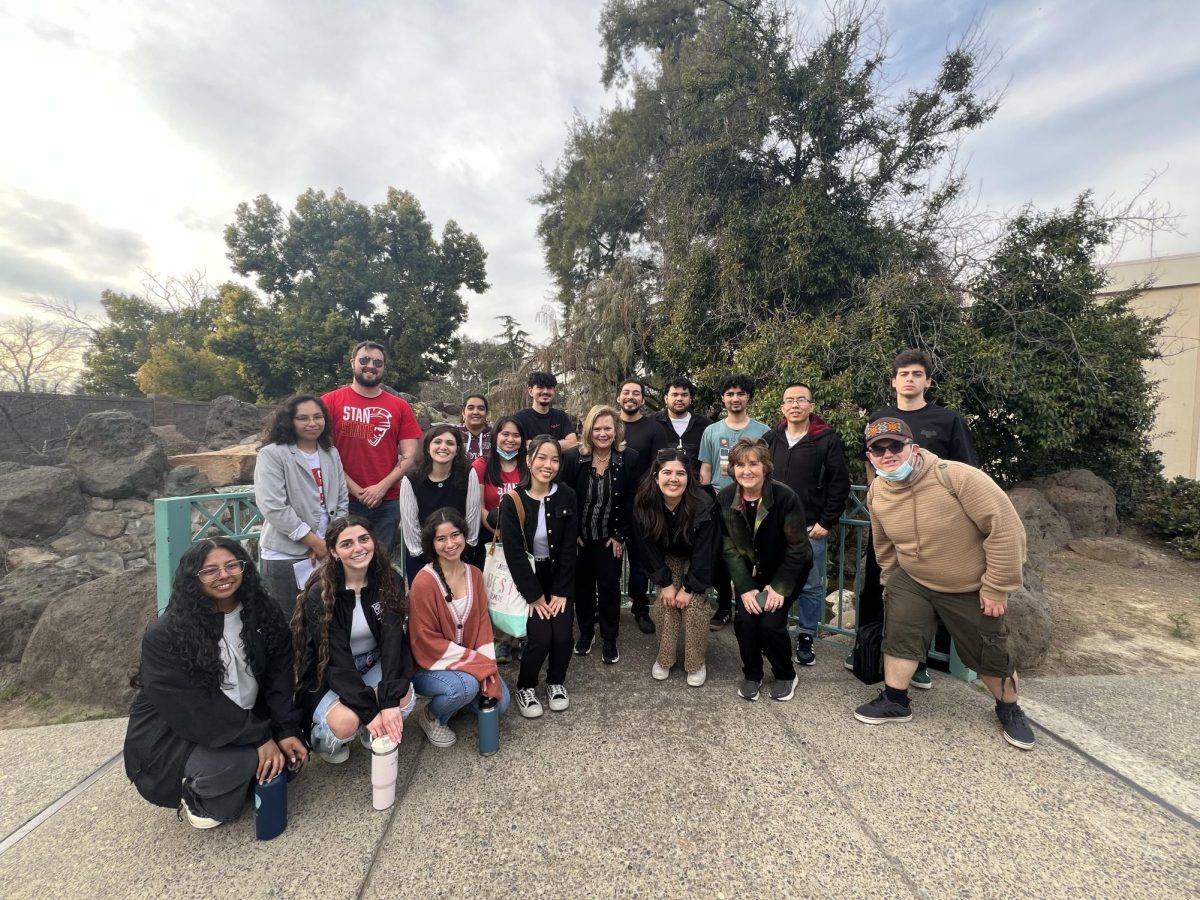If you have walked through the Demergasso-Bava Hall at California State University, Stanislaus (Stan State), during spring, chances are you have smelled the infamous aroma coming from the Bradford Pear trees.
The Bradford Pear, also known as a Callery Pear, is native tree species to Southeast Asian countries, like Vietnam that has made its way to the West.
These species of trees have gain popularity because of their changing appearance during seasons and their low maintenance, however there is a drawback during the spring time, their smell.
Many students like Princess Sarnillo (senior, Business) can compare the tree’s odor to another penetrating smell.
“It’s really bad, I don’t like the smell because it smells like semen,” Sarnillo said about the tree’s distinct odor.
According to Associate Professor of Botany Dr. Stuart Wooley there is a distinct reason why the trees have their distinct smell.
“They are smelly because they attract flies who drink the nectar from the flower and drop off the flower’s pollen to another flower and exchange it,” Dr. Wooley said.
The benefits of having these trees around campus outweigh the stinky drawbacks.
“They are a good size to have and provide shade for the parking lot,” Dr. Wooley said. “It also shades the asphalt which reduces heat and stop buckling which extends the life of the parking lot.”
Stephanie Gonzalez (junior, Business) is unaware to smell the trees but has notice how the tress cover most of the parking lots.
“They look pretty and I don’t mind when the petals fall on my car,” Gonzalez said.
Assistant Professor of Botany Dr. Andy Gardner has a positive take on the infamous smell these tree produce around campus.
“It’s pungent, not necessarily a bad thing,” Dr. Gardner said. “How can a botanist dislike plant sex?”











